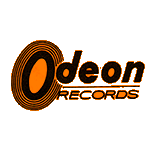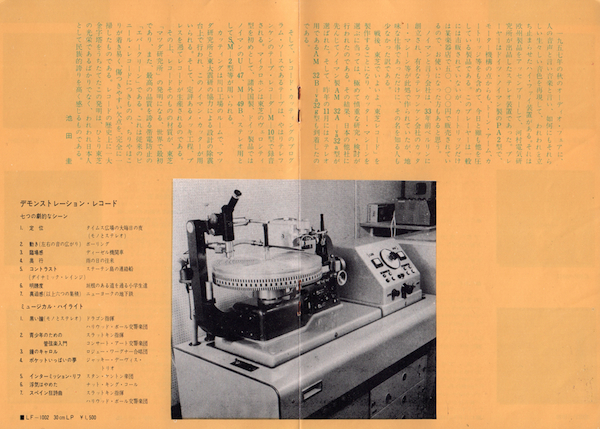The Toshiba EMI Recordings
LP: Odeon Label
(Update: 31th. March 2020)
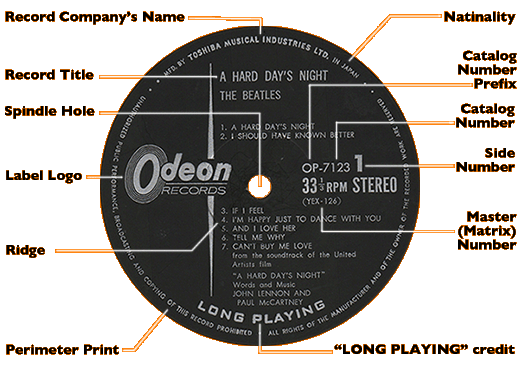 |
Example:LP's List
| TITLE | A HARD DAY'S NIGHT | ||||
| CATALOG NUMBER | OP-7123 |
||||
| RELEASE DATE | 5th September.1964/First Press |
||||
| TRACK LISTING | SIDE 1 | SIDE 2 | |||
| A
Hard Day's Night |
Any
Time At All |
||||
| I
Should Have Known Better |
I'll
Cry Instead |
||||
| If
I Fell |
Things
We Said Today |
||||
| I'm
Happy Just To Dance With You |
When
I Get Home |
||||
| And
I Love Her |
You
Can't Do That |
||||
| Tell
Me Why |
I'll Be Back | ||||
| Can't Buy Me Love | |||||
| FRONT COVER |
BACK COVER |
LABEL |
DISK | ||
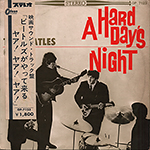 |
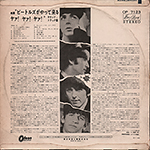 |
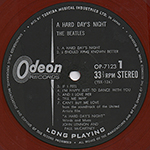 |
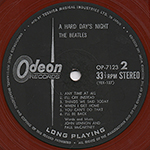 |
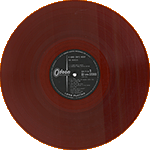 |
|
| INNER
SLEEVE |
LYRIC
SHEET (Slip Sheet Type)
|
||||
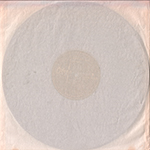 |
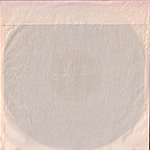 |
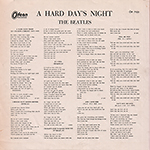 |
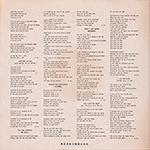 |
The
original plain white inner bag has a fold-over flap at the top of the
bag to prevent the record from falling out. The lyric sheet is slip sheet type. |
|
| FRONT COVER CLOSE UP | |||||
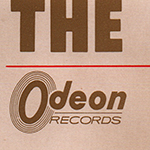 |
 |
 |
|||
| Odeon
logo mark and catalog number "OP 7123" were
printed on the front sleeve. Issues with a "STEREO" banner across the top of the cover. |
|||||
| BACK COVER CLOSE UP | |||||
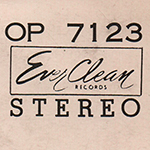 |
Toshiba pressed a lot of their records on red, "Everclean" vinyl. The Everclean vinyl was designed to be less prone to collecting static electricity and dust than the more common black vinyl. | 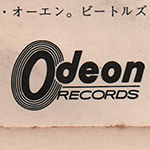 |
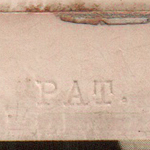 |
Odeon logo mark was printed
at the lower left corner of the back cover. The words "PAT." was embossed at the bottom of the back cover. |
|
| BACK COVER CLOSE UP | |||||
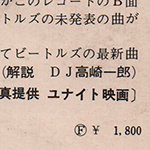 |
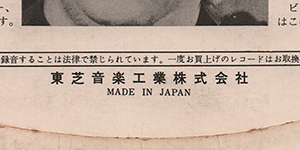 |
Single
type. Full laminated soft cover. Twin-flipback cover (round type). "Toshiba Musical Industries Ltd." and "F-¥1,800" were printed at the bottom of the back cover. |
|||
| LABEL CLOSE UP | |||||
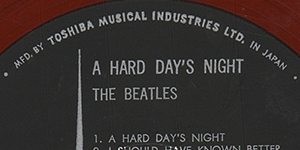 |
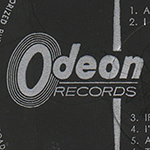 |
Toshiba pressed a
lot of their records on red, "Everclean"
vinyl from 1958 through 1974
(maybe). The Everclean vinyl was designed to be less prone to
collecting static electricity and dust than the more common black
vinyl. The words "MFD. BY TOSHIBA MUSICAL
INDUSTRIES LTD. IN JAPAN" was
printed at the perimeter. |
|||
| LABEL CLOSE UP | |||||
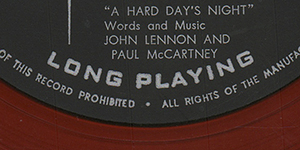 |
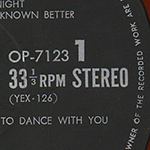 |
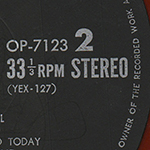 |
The words "LONG PLAYING" was printed at the
bottom of the label. Catalog number and matrix number were printed at the right side of the center hole. |
||
|
OTHER ITEM
|
|||||
| - | |||||
| RECORD LABEL | Odeon
Label Type-1 (with the words "LONG PLAYING") |
||||
| MIX | STEREO | ||||
| MATRIX No. | SIDE 1 | YEX 126 - 4 | |||
| SIDE 2 | YEX 127 - 11 | ||||
| PRESS MARK | H4 |
||||
| VINYL COLOR | RED |
||||
| RECORD COMPANY'S NAME | SLEEVE | Toshiba Ongaku kogyo Kabusikigaisha |
|||
| LABEL | MFD. BY TOSHIBA
MUSICAL INDUSTRIES LTD. IN JAPAN |
||||
| SYMBOL/PRICE | F
- ¥1,800 |
||||
| LYRIC SHEET STYLE | Slip
Sheet Type |
||||
| COVER FORM | Single
type. Full laminated soft cover. Twin-flipback cover (round type) |
||||
| INNER
SLEEVE |
Plain White Inner bag |
||||
| OBI |
"Hankake"
Obi White in design with dark blue Japanese text. Obis draped from the top, not forming a loop. |
||||
| COVER DESIGN/ PHOTO/ NOTES | Notes: Ichiro Takasaki |
||||
|
COMMENTS
|
Black Odeon label with
silver print. The words "LONG PLAYING" was printed at the bottom of the label. Toshiba released the first Japanese record featuring the Beatles. When this record was released in 1964, Toshiba's official name was "Toshiba Musical Industries Ltd." and they used the Odeon label for this and subsequent Beatles releases. Red vinyl: Besides good sound and quality printing, Japanese records also offered some other things of interest to the collector. One of the primary manufacturing companies in Japan, Toshiba, pressed a lot of their records on red, “Everclean” vinyl from 1958 through 1974 (maybe). While not pressed as collectors’ items, these red vinyl pressings are more sought out by collectors than their black vinyl counterparts. The Everclean vinyl was designed to be less prone to collecting static electricity and dust than the more common black vinyl. The obi: A. K. A."Hankake" Obi It is made from very thin paper stock. It is white in design with dark blue Japanese text. It also features an Odeon logo, catalogue number and price information. While most Japanese records feature local music, a lot of music fans there like foreign music, as well. The language barrier in Japan presented a problem – should foreign album covers be changed for Japanese albums? The solution was the obi, which means “belt” or “sash”. The obi is a strip of paper, usually about two inches wide, that wraps vertically around the album cover, containing information about the artist and album in Japanese. As these strips of paper were fragile and easily torn, they are often missing, especially since consumers in the 1950s and 1960s attached little significance to them. Finding Japanese records made prior to 1970 that still have the obi intact can be quite difficult, and for some albums, nearly impossible. The inclusion of the obi can dramatically affect the price of some Japanese records, sometimes increasing the price by a factor of ten. While usually found in a wraparound strip, there are other versions of the obi that have occasionally been used. In the early 1960s, a short-lived hankake obi, or “half obi” was used. These were small strips of paper that simply folded over the top of the cover. These were problematic for retailers, as they tended to easily fall off of the record. |
||||
Odeon Label Variation...Back to the LP List
| Company name | "LONG
PLAYING" credit |
Company Name credit | Variation | Mix |
|
| Mono |
Stereo |
||||
| TOSHIBA MUSICAL INDUSTRIES LTD. | Yes | MFD. BY TOSHIBA
MUSICAL INDUSTRIES LTD. IN JAPAN |
Odeon Type-1 | Yes |
Yes |
| - |
Odeon Type-2 | Yes |
Yes |
||
| MFD. UNDER LICENCE
BY TOSHIBA MUSICAL INDUSTRIES LTD. IN JAPAN |
Odeon Type-3 | ? |
Yes |
||
| Mix |
Odeon
Type-1 |
Odeon Type-2 | Odeon Type-3 |
| MONO |
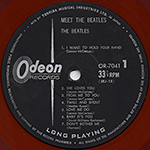 |
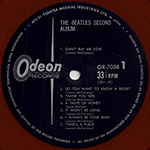
|
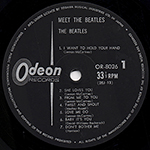 |
| STEREO |
 |
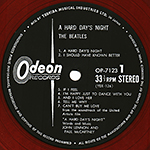 |
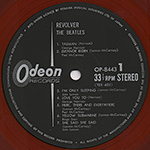 |
Label Variation #1...The Words "LONG PLAYING" credit
| Early Odeon label issues, the words "LONG PLAYNG" was printed at the bottom of the label. But in 1966, this credit was removed from the label. |
| Mix |
Label |
Odeon Type-1 "LONG PLAYING" was printed. |
Odeon
Type-2 and Type-3 "LONG PLAYING" was removed. |
| MONO | 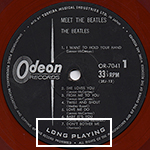 |
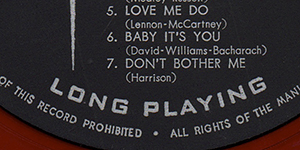 |
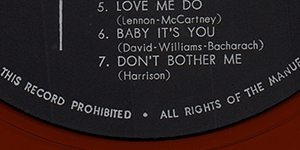 |
| STEREO | 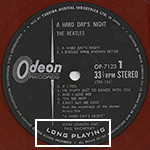 |
 |
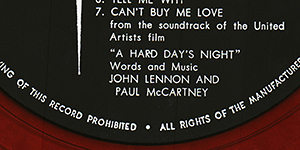 |
Label Variation #2..."Company Name" credit
| All of the Odeon label issues, its company name
"TOSHIBA MUSICAL INDUSTRIES LTD." was printed at the perimeter of the
label. In middle 1968 to early 1969, Odeon label was changed from type-2 to type-3. The words "MFD. UNDER LICENCE BY TOSHIBA MUSICAL INDUSTRIES LTD. IN JAPAN" was printed at the perimeter. |
 |
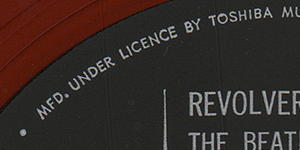 |
| Mix |
Label |
Odeon Type-1 and Type-2 "MFD.BY" at perimeter |
Odeon
Type-3 "MFD.UNDER LICENCE BY" at perimeter |
| MONO | 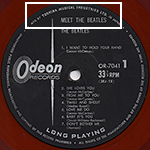 |
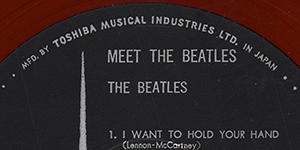 |
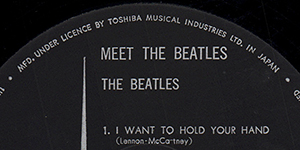
|
| STEREO | 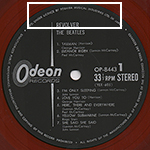 |
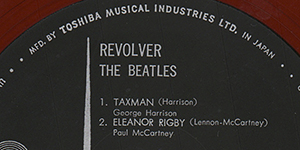 |
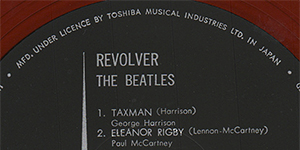 |
|
Album
|
Catalog Number
|
Odeon Type-1
|
Odeon Type-2
| Odeon Type-3 |
| Meet The Beatles (Japanese Edition) | OR-7041 |
Yes |
Yes | - |
| OR-8026 | - |
Yes |
Yes |
|
| The Beatles' Second Album (Japanese Edition) | OR-7058 |
Yes |
Yes | - |
| OR-8027 | - |
Yes |
Yes |
|
| Beatles No.5 (Japanese Edition) | OR-7103 |
Yes |
Yes | - |
| OR-8028 | - |
Yes |
? |
|
| A Hard Day's Night | OP-7123 |
Yes |
Yes | - |
| OP-8147 | - |
Yes |
? |
|
| Beatles For Sale | OP-7179 |
Yes |
? | - |
| OP-8442 | - |
Yes |
Yes |
|
| Help! (UK Edition) | OP-7387 |
Yes |
Yes | - |
| OP-8151 | - |
Yes |
? |
|
| Rubber Soul | OP-7450 |
- |
Yes | - |
| OP-8156 | - |
Yes |
? |
|
| Please Please Me (Japanese Edition) | OP-7548 |
- |
Yes | ? |
| With The Beatles (Japanese Edition) | OP-7549 |
- |
Yes | ? |
| The Beatles' Story | OP-7553-4 |
- |
Yes | ? |
| Revolver | OP-7600 |
- |
Yes | - |
| OP-8443 | - |
Yes |
||
| Oldies | OP-8016 |
- |
Yes | ? |
| Sgt. Peppers | OP-8163 |
- |
Yes | ? |
| Magical Mytery Tour (US Edition) | OP-9728 |
- |
Yes | Yes |
Mixing...Mono and Stereo...Back to the LP List
| Odeon "OR-****" series were issued on Mono, "OP-****" series were always issued on Stereo. |
|
Album
|
Catalog Number
|
Mono
|
Stereo
|
| Meet The Beatles (Japanese Edition) | OR-7041 |
Yes
|
-
|
| OR-8026 | |||
| The Beatles' Second Album (Japanese Edition) | OR-7058 |
Yes
|
-
|
| OR-8027 | |||
| Beatles No.5 (Japanese Edition) | OR-7103 |
Yes
|
-
|
| OR-8028 | |||
| A Hard Day's Night | OP-7123 |
-
|
Yes
|
| OP-8147 | |||
| Beatles For Sale | OP-7179 |
-
|
Yes
|
| OP-8442 | |||
| Help! (UK Edition) | OP-7387 |
-
|
Yes
|
| OP-8151 | |||
| Rubber Soul | OP-7450 |
-
|
Yes
|
| OP-8156 | |||
| Please Please Me (Japanese Edition) | OP-7548 |
-
|
Yes
|
| With The Beatles (Japanese Edition) | OP-7549 |
-
|
Yes
|
| The Beatles' Story | OP-7553-4 |
-
|
Yes
|
| Revolver | OP-7600 |
-
|
Yes
|
| OP-8443 | |||
| Oldies | OP-8016 |
-
|
Yes
|
| Sgt. Peppers | OP-8163 |
-
|
Yes
|
| Magical Mytery Tour (US Edition) | OP-9728 |
-
|
Yes
|
| MONO | STEREO | ||
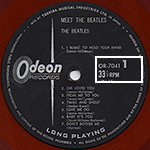 |
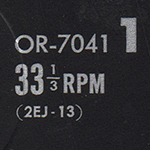 |
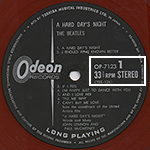 |
 |
| There is no mixing type credit on the label. | The word "STEREO" was printed on the label. | ||
Manufacturer's Catalog Number...Back to the LP List
| Prefix | Label | Vinyl
Color |
| OR,OP | Odeon | Black |
| Red (Ever Clean) |
||
| AR,AP,EAP | Apple | Black |
| Red (Ever Clean) |
||
| EAS | Apple | Black |
| Red | ||
| Blue | ||
| EMI/Odeon | Black | |
| Red | ||
| Blue |
| From 1964-1966, Odeon LPs were issued with
catalog numbers in the from "OR-7XXX" or "OP-7XXX",
where XXX is a 3-digit number. In 1967, starting with "A Collection of
Beatles' Oldies", numbering for new Odeon LPs changed to the form "OP-8XXX",
and the older LPs were reissued with new "OR-8XXX" or "OP-8XXX"numbers. In late 1968, numbering for new LPs was changed again and "Magical Mystery Tour" was issued with an "OP-9XXX" number. This time, however, no other LPs were reissued with "OP-9XXX" numbers. When the Odeon Label changed to Apple, LP numbering in the form "AP-8XXX" began and all LPs with numbers in the form "OR-8XXX", "OP-8XXX" and "OP-9XXX" were reissued in the form "AR-8XXX", "AP-8XXX" and "AP-9XXX", respectively. There are a few cases of unusual Apple LP numbering worth mentioning. In 1970, the "LET IT BE Box" was first issued as "AP-9009" but reissued as the gatefold U.S. edition "AP-80189" a few months later. In 1973, the LPs "Magical Mystery Tour", "THE BEATLES 1962-1966" and "THE BEATLES 1967-1970" were issued with the unusual EAP prefix and unique numbers. And in 1976, certain US LPs were issued with five-digit numbers in the form "AP-800XX". When the label changed again to EMI/Odeon in 1976, the LPs were renumbered more or less sequentially with EAS prefixes. Finally, the LPs were sequentially renumbered with TOJP prefixes for the recent 1992 reissues. |
| Catalog
Number |
MONO |
STEREO |
||
| Sleeve |
Label |
Sleeve |
Label |
|
| OR-7XXX or OP-7XXX | 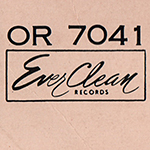 |
 |
 |
 |
| OR-8XXX or OP-8XXX | 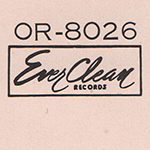 |
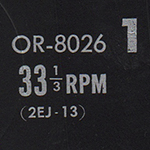 |
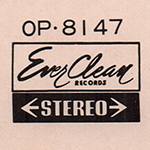 |
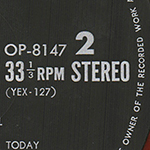 |
| OP-9XXX | - |
- |
Preparing Now |
Preparing Now |
Vinyl Color...Back to the LP List
| Besides good sound and quality
printing, Japanese records also offered some other things of interest
to the collector. One of the primary manufacturing companies in
Japan, Toshiba, pressed a lot of their records on red, “Everclean”
vinyl from 1958 through 1974 (maybe). While not pressed as
collectors’ items, these red vinyl pressings are more sought out by
collectors than their black vinyl counterparts. The Everclean
vinyl was designed to be less prone to collecting static electricity
and dust than the more common black vinyl. | 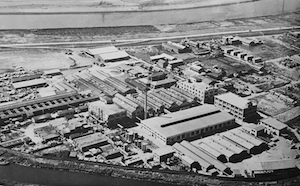 Toshiba Kawaguchi Factory, in Saitama |
| All of the Toshiba's red vinyl records were exclusively manufactured by its factory in Kawaguchi, Saitama. |
| Color |
Vinyl |
Comments |
| Red Vinyl (Ever Clean Records) |
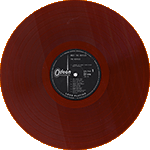 |
Most
if not all of the red vinyl OR and OP Odeon LPs were manufactured with
an ingredient intended to prevent the buildup of static electricity on
the disks. TOSHIBA's trademark for records manufactured with this
ingredient is "Ever Clean", and special efforts were made to promote
this feature. |
| Black Vinyl (Almost Contract Pressings) |
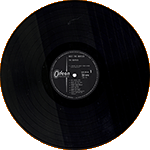 |
Sometimes
Toshiba had problems to press enough records to keep up with the
demand. To increase production they turned to other companies
(Gramophone, Sony etc.) to press up some copies of a particular
release, however, the majority of copies were pressed by Toshiba
themselves. |
|
Album
|
Catalog Number
|
Red Vinyl
|
Black Vinyl |
| Meet The Beatles (Japanese Edition) | OR-7041 | Yes |
- |
| OR-8026 | Yes |
Yes (Gramophone) |
|
| The Beatles' Second Album (Japanese Edition) | OR-7058 | Yes |
- |
| OR-8027 | Yes |
Yes (Gramophone) |
|
| Beatles No.5 (Japanese Edition) | OR-7103 | Yes |
- |
| OR-8028 | Yes |
Yes (Toshiba) |
|
| A Hard Day's Night | OP-7123 | Yes |
- |
| OP-8147 | Yes |
- |
|
| Beatles For Sale | OP-7179 | Yes |
Yes (Gramophone) |
| OP-8442 | Yes |
- |
|
| Help! (UK Edition) | OP-7387 | Yes |
- |
| OP-8151 | Yes |
Yes (Sony) |
|
| Rubber Soul | OP-7450 | Yes |
- |
| OP-8156 | Yes |
- |
|
| Please Please Me (Japanese Edition) | OP-7548 | Yes |
Yes (Gramophone / King) |
| With The Beatles (Japanese Edition) | OP-7549 | Yes |
Yes (Gramophone / King / Victor) |
| The Beatles' Story | OP-7553-4 | Yes |
- |
| Revolver | OP-7600 | Yes |
- |
| OP-8443 | Yes |
- |
|
| Oldies | OP-8016 | Yes |
- |
| Sgt. Peppers Lonely Hearts Club Band |
OP-8163 | Yes |
- |
| Magical Mytery Tour (US Edition) | OP-9728 | Yes |
- |
Ever Clean(TM) RECORD...Back to the LP List
| Most if not all of the red vinyl OR
and OP Odeon LPs were manufactured
with an ingredient intended to prevent the buildup of static
electricity on the disks. TOSHIBA's trademark for records manufactured
with this ingredient is "Ever Clean", and special efforts were
made to promote this feature. The "Ever Clean" trademark appears as
shown below on the back cover or (if applicable ) inside the gatefold
of an LP. "Ever Clean" seems to have been used on LPs only. EPs or Singles bearing the trademark cannot be found. |
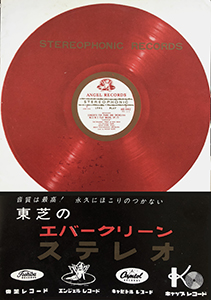 booklet: "Toshiba Ever Clean (July 1960)" |
|
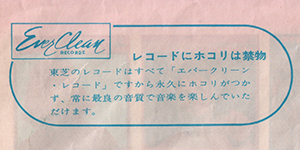 |
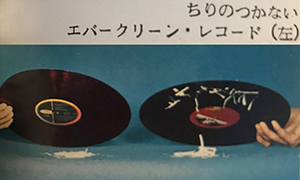 |
| "EverCrean" Dust is prohibited on records All Toshiba records are "Ever Clean", so you can always enjoy the music with the best sound quality without dust. (printed on the inner sleeve) |
No dust on Everclean Records (left) |
Cutting Machine (at Toshiba Kawaguchi Factory, in Saitama)
Matrix Number ...Back to the Single List
| Matrix numbers are alphanumeric codes
(and on occasion, other symbols) stamped or hand written (or a
combination of the two) into the run-out groove area of a gramophone
record. This is the non-grooved area between the end of the final song
on a record's side and the label, also known as the run-off groove
area, end-groove area, matrix area, or "dead wax". There are two parts of the matrix number to be considered: the "main number", which is usually printed on the label as well, and "extra information" which can include a cut or take number. The most important part of the "extra information" is usually the cut number, which is a suffix to the main number. For example, matrix number 12345 is seen on a label, but examination of the run-out groove area reveals number 12345–3, which indicates this is the third cut of this side. It is not unusual to find records with a different cut number on each side. (From "Wikipedia, the free encyclopedia") |
|
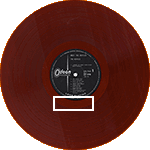 |
 Matrix Number: YEX - 605 - 2 |
Press Mark ...Back to the LP List
| According to "The Illustrated Guide
To The '60s Japanese LP With Obi (Published by: Shinko Music
Entertainment Co., Ltd.)", the inscription area may also contain
cutting dates. The press mark can be almost found stamped into the deadwax at the 9 o'clock position of side-1. |
| from October 1961 to May 1973 | |||||
| Press Mark: Alphabet + Number ex.) "E4"=1964 May ex.) "M5"=December 1965 |
|||||
| A | B | C | D | E | F |
| January | February | March | April | May | June |
| G | H | J | K | L | M |
| July | August | September | October | November | December |
| from June 1973 - | |||||
| Press Mark: Number +
Number, or Number + Alphabet ex.) "3-7"=1973 July ex.) "4-X"=1974 October |
|||||
| 1 | 2 | 3 | 4 | 5 | 6 |
| January | February | March | April | May | June |
| 7 | 8 | 9 | X | Y | Z |
| July | August | September | October | November | December |
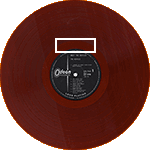 |
 Press Mark: 7L=1967 November |
 Press Mark: 9J=1969 September |


